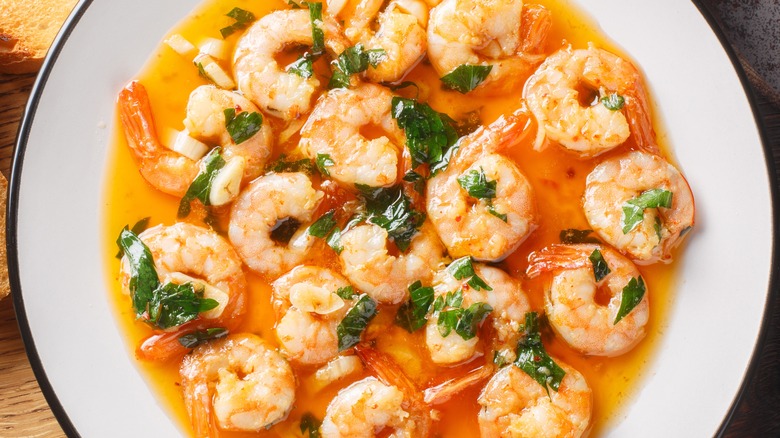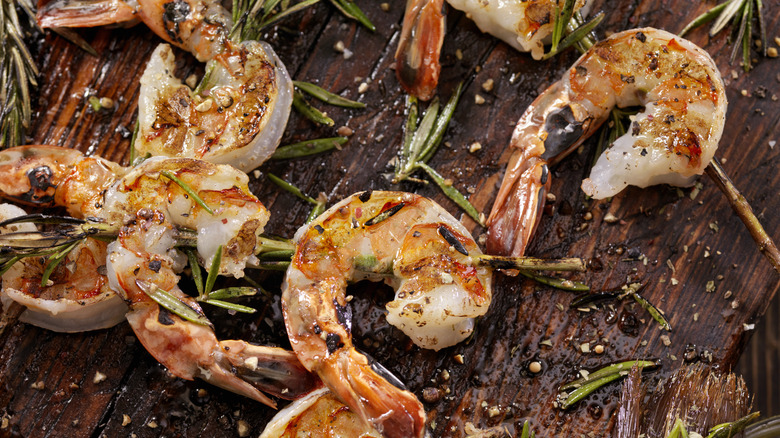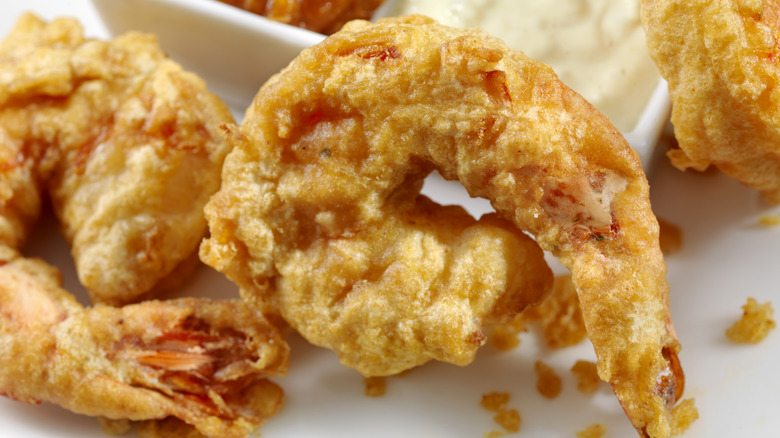Why Soaking Shrimp In A Milk Bath Is A Game Changer
Have you ever found yourself ready to make a perfectly seasoned shrimp cocktail but discovered your shrimp smells a touch too fishy? Fortunately, all you need to do is soak your shrimp in milk to completely rid it of any odors. This process will also give the shrimp a less intense taste. All you need to do is soak the shrimp for 10 to 30 minutes — meaning this won't even set your prep time back much at all.
After you soak the shrimp, thoroughly rinse and dry it before cooking. While the milk won't infuse the shrimp with any taste of its own, leftover liquid can still interfere with the cooking process. If you aim to grill, roast, or sautee the shrimp, a wet surface can stop it from browning properly and increase the cooking time. Even if you plan to poach your seafood (such as for a comforting bowl of shrimp congee), the milk's flavor will be unwanted.
Why and when you should use this process
This process works because shrimp contains a compound called trimethylamine N-oxide (TMAO) that is found in many kinds of seafood. The longer shrimp is kept after harvesting, the more the TMAO breaks down and converts into a similar compound called trimethylamine (TMA). This process produces fishy odors and flavors. When seafood is soaked in milk, however, the TMA binds to casein (a protein found in milk). Once you pour the liquid out, the fishy compounds go with it.
This process won't work if the shrimp has truly gone bad. Per the USDA, raw shrimp should not be stored for more than two days. If your shrimp has developed slime on its surface or is no longer firm to the touch, it has gone bad. Rotten shrimp will also have a sour smell reminiscent of ammonia, which is distinct from shellfish that smells a little too oceanic. No amount of milk will make it safe to eat, and it must be thrown out.
Adding flavor to your soaking liquid
Although plain milk won't impart much flavor to the shrimp, that doesn't mean you can't add seasoning to the dairy. One of the easiest ways to do this is by swapping milk out for buttermilk. This will not only add a pleasant tang but will tenderize the shrimp further due to buttermilk's increased acidity. That tartness does more than just flavor the shrimp, however; acid also removes TMA in seafood. Since buttermilk has more acid than plain milk as well as casein, it's doubly armed to counteract those fishy odors. This technique is great for fried shrimp in a dish like a salt and pepper shrimp stir-fry.
Adding spices to the soaking liquid will also infuse your shrimp with flavor. You can make that fried shrimp even tastier by adding garlic powder, oregano, smoked paprika, or hot sauce. To improve its general texture, add two teaspoons of baking soda to the liquid. The alkalinity of baking soda alters the shrimp, making it plump and more difficult to overcook. Or, for super juicy shrimp, you can soak them in a traditional brine. Dissolve a tablespoon of kosher salt into a quart of water and submerge the shrimp. Unlike meat, which can take hours to brine, the comparatively small shrimp should be ready in 30 minutes.



